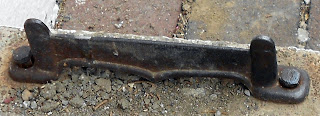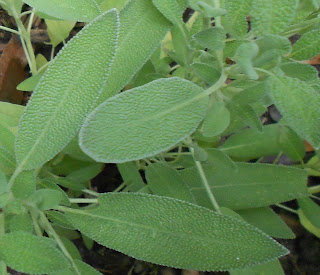Thoreau once referred to ferns as immortal, and perhaps they are.
At 360 million years old, ferns or pteridophytes
are one of the oldest plant species on earth.
They do not flower, nor do they produce seed.
They spread by releasing spores into the air,
which could sound a bit like the plot for a bad science fiction movie,
except it is one of the things that make ferns enchanting and unique.
There are many different varieties of ferns growing in the woodlands of Virginia.
I don't know the different names,
but discovering a bed of lacy and graceful green fronds
tucked in the undergrowth makes for a memorable image.
They create kind of a visual poetry.
They create kind of a visual poetry.
Since our house is situated in a humid lowland
that I affectionately refer to as a swamp,
we find ferns fairly easy to grow
that I affectionately refer to as a swamp,
we find ferns fairly easy to grow
although we have some that haven't achieved the degree of lushness we expected,
probably because they are in dry shade.
For three years now, we've just kind of looked at them every so often
and wondered if they'll ever get as tall as the garden center said they would.
I've concluded their reputation for height and breadth is a rumor.
But we have plenty of others.
We usually have a dozen or more Boston ferns
hanging from shepherd hooks or perching on stands each summer.
They grow easily and make it look like we know more about gardening than we really do.
And, of course, there is my great-grandmother's springeri fern
which in recent years has been asked to vacation in the garage over winter
to avoid shedding needles all over the carpet.
But it loves being outside during the other seasons.
to avoid shedding needles all over the carpet.
But it loves being outside during the other seasons.
This week it has bloomed with tiny white flowers:
Another fern I have is my perennial favorite, the maidenhair fern.
The maidenhair fern is oh-so-delicate
and I have easily bought and killed at least three in recent years.
But I may be learning the proper way to treat it.
I moved it out of the partially sunny spot I had placed it in
and moved it under the patio umbrella.
Suddenly, it is happy and its frilly leaves are no longer
browning and curling up at the ends:
browning and curling up at the ends:
Maidenhair ferns are supposed to be edible
or used medicinally for colds if steeped in hot water to make a tisane.
But I can't imagine shearing this lacy beauty and poaching its leaves.
Despite assurances about its safety,
I remain reticent about serving ferns up on a salad plate or in a tea cup.
Some things should remain food for the soul.
<>
Despite assurances about its safety,
I remain reticent about serving ferns up on a salad plate or in a tea cup.
Some things should remain food for the soul.
<>







.jpg)

.jpg)































